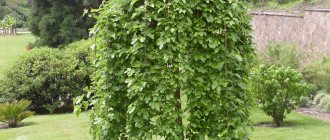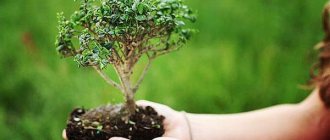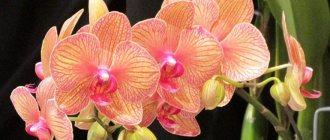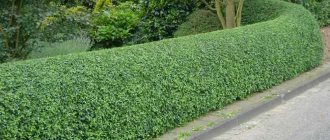Lawn care takes a lot of effort, and you are no longer glad that you decided to organize a lawn in front of your house? Sow a Moorish lawn! It only needs to be mowed twice a season, but it is highly decorative.
Wildflowers are cute, beautiful and... worthy of a whole trend in landscape design. The so-called Moorish lawns are nothing more than areas sown with herbs and all kinds of daisies, poppies, cornflowers, etc. This is an imitation of the expanse of fields and a response to the desire of modern man for everything natural and natural.
What it is?
Moorish lawns are distinguished from other types of artificially created lawns by planting mixtures of grasses.
The grass mixture includes many components of ornamental grasses, perennials and beautifully flowering annuals.
A properly selected mixture of herbs allows you to enjoy the beauty of your lawn from spring until late autumn.
At the moment when the flowering of some herbs ends, for others it is just beginning.
The yellowness of fading plants is hidden by rapidly growing new young growth.
It is considered traditional for a Moorish lawn grass mixture to contain 80% herbs and 20% flowers.
The grass mixture can include up to 40 plant varieties. Seed material is selected taking into account the climatic characteristics of the region where they are planted. The Moorish lawn does not require regular mowing of the grass, so it is suitable for landscaping areas that are difficult to maintain on a regular basis.
Meadow chamomile
Or common popovnik, which should not be confused with chamomile. A multicolored herbaceous plant with a height of 60 to 90 cm. The flower is recognizable: a massive yellow basket framed by white elongated petals.
It begins to bloom in March and ends in late autumn. Loves the sun. For its full growth, you should choose neutral or slightly acidic soils, and also avoid stagnant water.
Rules for choosing herbs for sowing
On sale you can find ready-made grass mixtures designed for various soil types and climatic zones. You can prepare them yourself. To do this, you need to know the rules for preparing grass mixtures. It is based on the seed material used for sowing a regular lawn. Seeds of perennial grasses and flowering annuals suitable for the climatic conditions and climate of the planting region are mixed with it.
Most often, bluegrass, timothy grass, ryegrass and thin bent are included in the grass mixture for a Moorish lawn. Plants selected for the Moorish lawn must get rid of seeds on their own after flowering. For lush spring flowering of the lawn, the mixture must include early flowering bulbous crops.
The list of lawn grass varieties is quite wide. Landscape designers' favorites are:
- Meadow chamomile. The beauty of the plant is its ability to create uniquely beautiful white meadow carpets. The advantages of chamomile include its unpretentiousness, good survival rate in cold climates and a long period of maintaining its decorative properties. It stands out among herbs due to its large snow-white inflorescence with a yellow eye. The height of the plant can reach 0.9 m. Flowering begins in spring and ends in late autumn.
- Field cornflower. It is most often included in the Moorish lawn mixture due to the rich, bright color of the inflorescences and the ability to self-renew. This is facilitated by the plant releasing a large number of seeds during their ripening. The flowering period is from June to September.
- Large-flowered flax. An annual plant with inflorescences of a heavenly, snow-white or red hue. Despite its small height, flax can be used for cutting to make bouquets. The buds of the plant have a diameter of up to 3 cm. Large-flowered flax has many garden varieties. The variety most often used in Moorish lawn grass mixtures is “Magic Circles”. The plant can have a height of up to 45 cm.
- Calendula officinalis. An annual plant with powerful, highly branched bushes. It can have a height of up to 75 cm. The flowers range in color from yellow to dark brown. Calendula goes well with sage and delphinium. The flowering period lasts from June to November.
- Oriental poppy. A perennial plant with straight stems and single flowers with a diameter of up to 18 cm, having a fiery red color. The period of abundant flowering is the second ten days of May. The plant self-sows abundantly.
- Nemesia. The plant has annual and perennial species. The inflorescences can be colored: lemon, snow-white, lilac and scarlet. Nemesia tolerates low temperatures well. The flowering period lasts from June to September.
- The bell is medium. Biennial plant with simple or double flowers with a diameter of up to 7 cm. Flower colors: blue, white and pink. Flowering period from May to August.
- Gypsophila. The plant has annual and perennial species. It can grow up to 50 cm in height. It retains its decorative properties for a long time. Flowering period August-September.
Flax grandiflora
An interesting fast-growing annual, up to 60 cm in height. One 3-5 centimeter flower blooms for only a day, and the next day another one opens from the inflorescence.
Depending on the variety, the shape and color of the flowers change. They can be white star-shaped, white with a cherry center, blue with a yellow center, deep red and pink, salmon and apricot.
Flax reproduces by self-sowing, but you can collect some seeds for next year. It blooms from July until frost, but is very dependent on the number of sunny days.
Technology of creation and cultivation
Setting up a Moorish-style lawn begins with preparing the soil and planting material. The soil is dug up, weeds, stones and plant roots are removed from it. The digging depth must be at least 20 cm. After this operation, the soil is loosened and leveled.
When digging up the soil, organic or mineral fertilizers are usually added to it. Their choice depends on the time of work and soil composition. Organic matter is used as fertilizer when cultivating the land in the fall. During the winter it rots in the soil.
The best time to sow Moorish lawn in regions with a temperate climate is the first half of autumn or the second half of spring.
Experienced gardeners sow cereals in the fall and flowering plants in the spring. For beginners, it is better to use the simultaneous sowing of the area intended for it to create a Moorish lawn.
Seed consumption is approximately 5-10 g per 1 square. m. To distribute seeds evenly into the soil, seeders are used, but you can sow them manually.
For convenience, the area intended for the Moorish lawn is divided into sectors, and the grass mixture is divided into their number. After sowing the seeds in the ground, they are covered with soil using a rake.
In regions with cold climates, crops are covered with non-woven material or film. Unevenness of seedlings can take up to 1 month.
Spring crops need regular watering until the seedlings reach a height of at least 10 cm.
Decorating lawns with flowers. Photo gallery
Follow the basic rules for placing flowering plants :
- Plant creeping or cushion-shaped perennials in the foreground;
- leave room for growth, maintain a checkerboard pattern;
- on a small lawn, do not get carried away by the number of compositions;
- select plants that have similar environmental requirements;
- the assortment should ensure flowering for a long time;
- Don’t forget about bulbous species that go well with grains.
Photo of a Moorish (blooming) lawn.
How to care?
Unpretentious, picturesque Moorish-style lawns do not require regular mowing. In the first year of its growth, the lawn is mowed no more than 3 times a year. This is usually done in May, June and September. Starting from the second year, mowing the Moorish lawn is carried out in the last ten days of June and August. The last time the grass is mowed to a height of 5-8 cm.
Time periods are approximate and depend on the region where the plants grow and their species.
If during all mowings the grass is immediately removed from the lawn, then during the last mowing it is left on it for 3-4 days. This is done so that the seeds of mown plants fall from their bushes to the ground. Watering lawns is carried out only in dry years. The optimal mowing height for a Moorish lawn is 8-10 cm. This is done using a scythe or a trimmer.
The best way to moisten your lawn is by sprinkling. It is carried out in several stages. This is done in order not to destroy the plant seedlings by excessive soil moisture. Watering it in the first two weeks after sowing is very important. In the future, natural precipitation will be sufficient. When mowing a Moorish lawn, weeds are removed by hand.
In most cases, plants included in the herbal mixture can do without fertilizing with mineral and organic fertilizers. They can be used to fertilize the soil to accelerate plant growth. The optimal feeding for them can be complex fertilizers consisting of several nutrients.
Fertilizing of the Moorish lawn is carried out only in the next year after planting.
An important element of care is soil aeration, which improves gas exchange processes in it.
To carry it out, the soil is pierced with a pitchfork, an aerator or other special devices.
Such actions help to avoid the appearance of bald spots on the lawn and rotting roots.
Forget-me-nots
A perennial with a branched stem, small blue, pink or white flowers are collected in inflorescences. Flowering lasts all summer and extends into September.
There are more than 45 species of forget-me-nots. Of these, the most popular are swamp, forest and alpine garden. On a personal plot you can most often find a garden plant. Flower growers fell in love with it for its endurance and the minimal care that the plant requires.
It is not recommended to grow forget-me-not for more than 2 years, as over time it grows, the flower becomes smaller and loses its appearance.
Advantages and disadvantages
Lawns of this type have a unique decorative effect and originality.
Individual selection of herbal mixture allows you to create unique landscape compositions. They can be grown on any type of soil, including infertile ones. The correct choice of seed varieties allows you to select the optimal composition of the grass mixture for any region.
Among other advantages:
- unpretentiousness;
- minimal costs for sowing, growing and care;
- no need for regular haircuts;
- preservation of decorative effect throughout the flowering season.
The disadvantages include:
- different plant heights.
At first glance, this may seem like an unkempt area. Growing multiple species of plants in one area can be difficult for beginners. Throughout the flowering season, the lawn attracts the attention of bees, bumblebees and other insects.
Tulips
A famous spring flower that blooms in early summer. There is only one elastic bud on the thick green stem, which opens during the day and closes at night.
There are more than 114 varieties of tulips. They are distinguished by the shape, size and type of petals, as well as color. In addition to the usual red and yellow tulips, there are pink, burgundy and even blue tulips. The tulip is quite resistant to temperatures, but loves warmth. Flowers planted with bulbs can grow in one place for up to 6 years.
Question answer
How many flowers should be included in the grass mixture for a Moorish lawn?
For beginners, it is better to start with one type of flower, and then add another variety every year.
Is it worth buying ready-made mixtures for growing Moorish lawns or is it better to create a grass mixture yourself?
It is better for beginners to start with grass mixtures, but they need to be purchased carefully. Many plants included in imported mixtures do not take root well in the Russian climate and do not have time to acquire mature seeds.
At what height should Moorish lawn plants be mowed in the Moscow region?
The optimal height of a Moorish lawn is considered to be 40-50 cm. It is cut once a year in the fall.
What herbs are best used for sowing Moorish lawn in regions with sandy soils?
The following grow well in such soils: brome, bluegrass, sheep fescue and clover.
Is it possible to plant a Moorish lawn in shady areas?
In such areas you should plant: hard, pasture or red manna, gum or field bluegrass.
The Moorish lawn can decorate landscapes with different topography. It is unpretentious in care and is distinguished by its originality.
Clover red
A ubiquitous plant with round flowers in lilac, purple and lilac colors. Differs from creeping clover, which has only white flowers.
Red clover grows from 25 to 90 cm and blooms from late May to autumn. Using a lawn flower will be beneficial because the plant is able to accumulate nitrogen in the rhizome, which enriches the soil. However, it is worth considering that clover is a honey plant and will attract bees to the site.
Preparing the site before planting
Simply sowing seeds in furrows and watering them with water will not work. This requires a lot of effort if you want great results. The first step is to eradicate all weeds. Fighting them with a hoe or shovel is useless or ineffective. It is better to turn to chemistry for help, or rather herbicides.
You need to study the composition of your weed carpet in detail. They can be treated with a mixture against dicotyledonous perennial plants, against annual monocotyledonous weeds, or simply filled with a continuous action herbicide. The effect of using the latter will be the best, but you cannot neglect the dosage of the drug, since it acts for a long time and the planted plants may simply not sprout. As a rule, planting can only be done 2 months after processing the area.
The entire surface must be cleared of foreign objects, stones and other troubles through which you can trip and injure your feet. Fertilize and compact the soil (preferably with a hand roller so that the top loosened layer does not lose moisture). A nitrogen mixture, ammonia, and organic matter are suitable as fertilizers.











